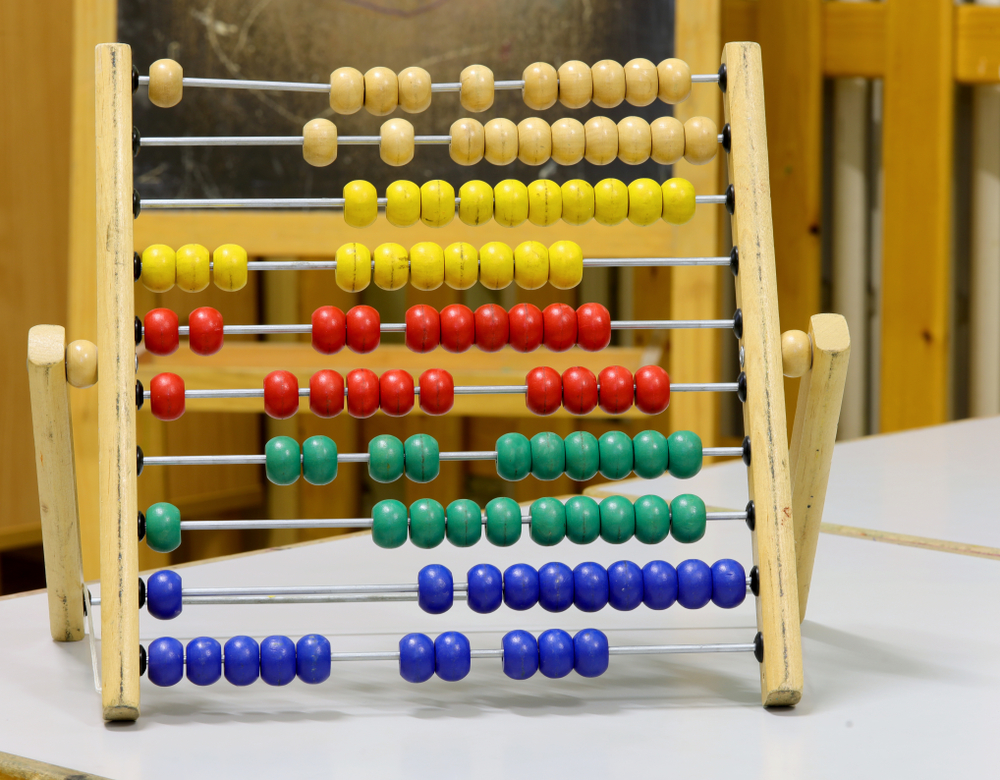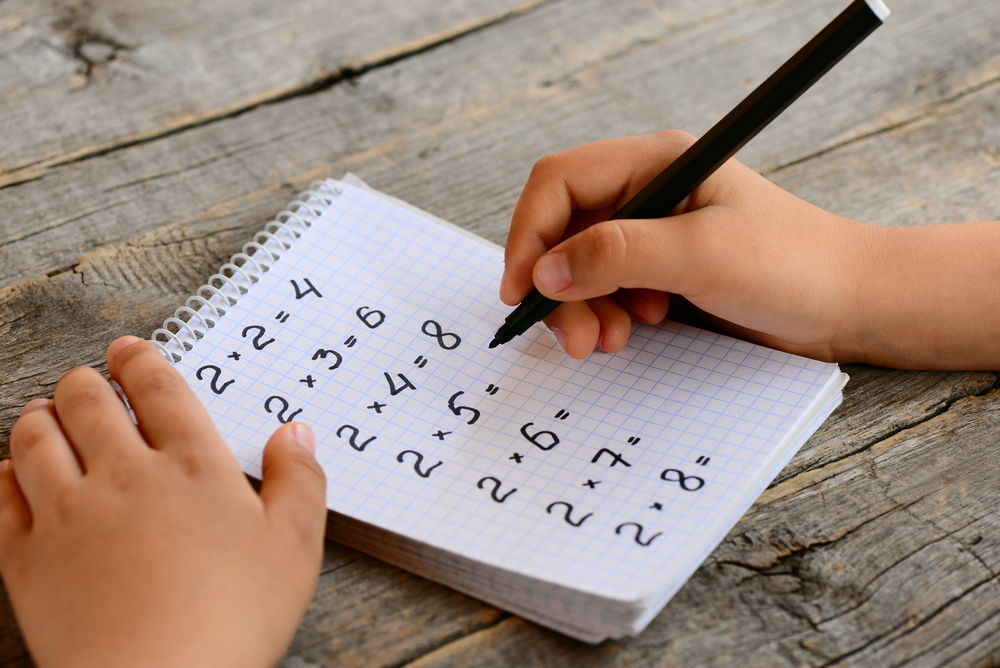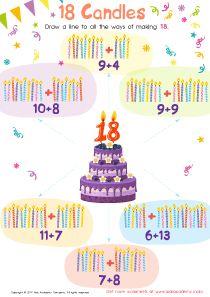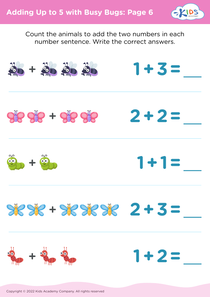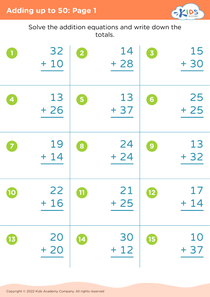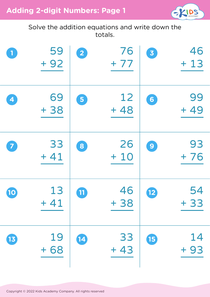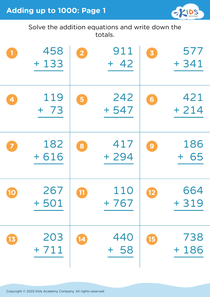Hand-eye Coordination Adding up to 100 Worksheets for Ages 6-8
3 filtered results
-
From - To
Enhance your child's math and motor skills with our Hand-eye Coordination Adding up to 100 Worksheets, designed for ages 6-8. These fun and interactive worksheets combine adding up to 100 exercises with engaging activities that boost hand-eye coordination. Ideal for young learners, the worksheets help children develop crucial fine motor skills while reinforcing their math abilities. Through varied and stimulating exercises, your child will stay focused and entertained, making learning both effective and enjoyable. Support your child's growth in math and coordination with these expertly crafted worksheets. Discover a seamless blend of learning and play today!
Hand-eye coordination is a crucial developmental skill for children ages 6-8, playing a vital role in their academic success and day-to-day activities. Parents and teachers should prioritize activities that enhance this skill, such as adding up to 100, for several compelling reasons.
First, proficient hand-eye coordination supports a child’s ability to write clearly and efficiently. When children practice activities that involve quick visual recognition and physical response—like adding up sums—they strengthen the neural pathways that connect visual input with motor skills, leading to more legible handwriting and faster completion of written tasks.
Second, mathematical activities that require both visual processing and manual adjustment, such as using counters or drawing numbers, enhance cognitive development. These exercises encourage children to engage multiple senses simultaneously, fostering better problem-solving skills and boosting their numerical literacy.
Lastly, developing good hand-eye coordination early can improve a child's confidence and competence in more complex tasks like sports, crafting, or playing musical instruments, enriching their well-rounded growth. Engaged, competent children are more likely to enjoy learning and participate actively in classroom activities.
Therefore, by making hand-eye coordination a focus through engaging mathematical exercises, parents and teachers lay the groundwork for both academic achievement and essential life skills.
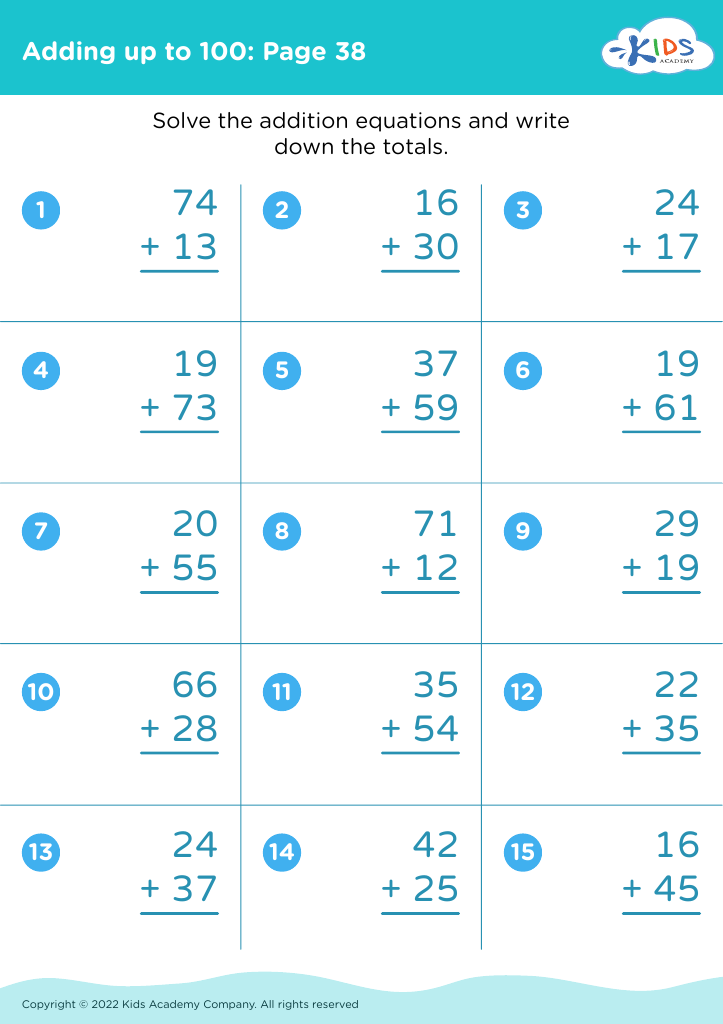

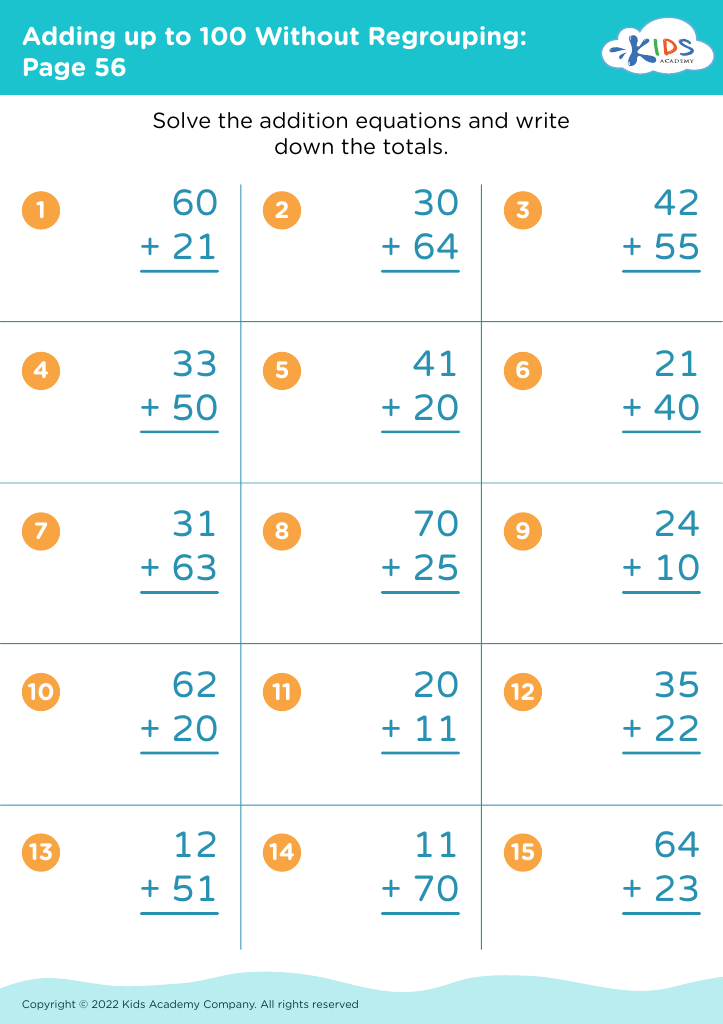


%20(1).jpg)
